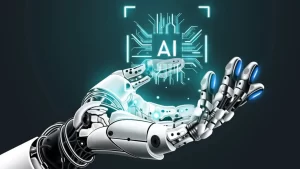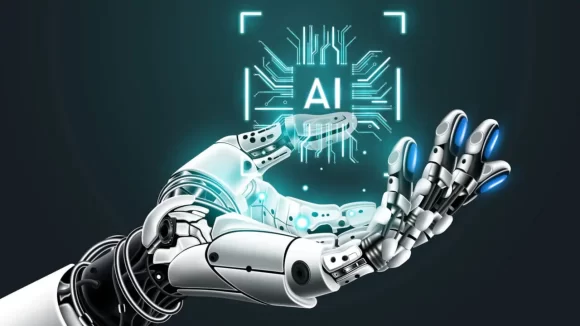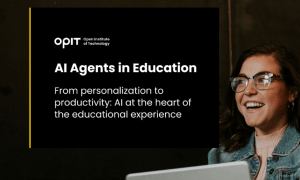Read the full article below:


Source:
- Agenda Digitale, published on May 16th, 2025
By Riccardo Ocleppo, Founder and Director of OPIT – Open Institute of Technology
AI ethics requires ongoing commitment. Organizations must integrate guidelines and a corporate culture geared towards responsibility and inclusiveness, preventing negative consequences for individuals and society.
In the world of artificial intelligence, concerns about algorithmic bias are coming to the forefront, calling for a collective effort to promote ethical practices in the development and use of AI.
This implies the need to understand the multiple causes and potential consequences of the biases themselves, identify concrete solutions and recognize the key role of academic institutions in this process.
Bias in AI is a form of injustice, often systemic, that can be embedded in algorithms. Its origins are many, but the main culprit is almost always the data set used to train the models. If this data reflects inequalities or prejudices present in society, the risk is that AI will absorb and reproduce them, consolidating these distortions.
But bias can also manifest itself in the opposite direction. This is what happened some time ago with Google Gemini. The generative AI system developed by Google, in an attempt to ensure greater inclusivity, ended up generating content and images completely disconnected from the reality it was supposed to represent.
Further complicating the picture is the very nature of AI models, which are often characterized by complex algorithms and opaque decision-making processes. This complexity makes it difficult to identify, and therefore correct, biases inherent in the systems.
Ethical Data Management to Reduce Bias in AI
Adopting good data management practices is essential to address these issues. The first step is to ensure that the datasets used for training are diverse and representative. This means actively seeking data that includes a wide variety of demographic, cultural, and social contexts, so as to avoid AI exclusively reproducing existing and potentially biased models.
Alongside data diversification, it is equally important to test models on different demographic groups. Only in this way can latent biases that would otherwise remain invisible be highlighted. Furthermore, promoting transparency in algorithms and decision-making processes is crucial. Transparency allows for critical control and makes all actors involved in the design and use of AI accountable.
Strategies for ethical and responsible artificial intelligence
Building ethical AI is not an isolated action, but an ongoing journey that requires constant attention and updating. This commitment is divided into several fundamental steps. First, ethical guidelines must be defined. Organizations must clearly establish the ethical standards to follow in the development and use of AI, inspired by fundamental values such as fairness, responsibility and transparency. These principles serve as a compass to guide all projects.
It is also essential to include a plurality of perspectives in the development of AI. Multidisciplinary teams, composed of technologists, ethicists, sociologists and representatives of the potentially involved communities, can help prevent and correct biases thanks to the variety of approaches. Last but not least, promote an ethical culture : in addition to establishing rules and composing diverse teams, it is essential to cultivate a corporate culture that places ethics at the center of every project. Only by integrating these values in the DNA of the organization can we ensure that ethics is a founding element of the development of AI.
The consequences of biased artificial intelligence
Ignoring the problem of bias can have serious and unpredictable consequences, with profound impacts on different areas of our lives. From the reinforcement of social inequalities to the loss of trust in AI-based systems, the risk is to fuel skepticism and resistance towards technological innovation. AI, if distorted, can negatively influence crucial decisions in sectors such as healthcare, employment and justice. Think, for example, of loan selection algorithms that unfairly penalize certain categories, or facial recognition software that incorrectly identifies people, with possible legal consequences. These are just some of the situations in which an unethical use of AI can worsen existing inequalities.
University training and research to counter bias in AI
Universities and higher education institutions have a crucial responsibility to address bias and promote ethical practices in AI development. Ethics must certainly be integrated into educational curricula. By including ethics modules in AI and computer science courses, universities can provide new generations of developers with the tools to recognize and address bias, contributing to more equitable and inclusive design. Universities can also be protagonists through research.
Academic institutions, with their autonomy and expertise, can explore the complexities of bias in depth, developing innovative solutions for detecting and mitigating bias. Since the topic of bias is multidimensional in nature, a collaborative approach is needed, thus fostering interdisciplinary collaboration. Universities can create spaces where computer scientists, ethicists, lawyers, and social scientists work together, offering more comprehensive and innovative solutions.
But that’s not all. As places of critical thinking and debate, universities can foster dialogue between developers, policy makers, and citizens through events, workshops, and conferences. This engagement is essential to raise awareness and promote responsible use of AI.
In this direction, several universities have already activated degree courses in artificial intelligence that combine advanced technical skills (in areas such as machine learning, computer vision and natural language processing) with training that is attentive to ethical and human implications.
Academic Opportunities for an Equitable AI Future
More and more universities around the world – including Yale and Oxford – are also creating research departments dedicated to AI and ethics.
The path to ethical AI is complex, but it also represents an opportunity to build a future where technology truly serves the common good.
By recognizing the root causes of bias , adopting responsible data practices, and engaging in ongoing and vigilant development, we can reduce the unintended effects of biased algorithms. In this process, academic institutions – thanks to their expertise and authority – are at the forefront, helping to shape a more equitable and inclusive digital age.
Related posts

Source:
- Times of Malta, published on September 18th, 2025
4 min read
The gathering brought together academics and technology leaders from prominent European Institutions, such as Instituto de Empresa (IE University), OPIT itself and the Royal College of Arts, to explore how artificial intelligence is reshaping the university experience.
The OPIT AI Copilot has been trained on the institute’s complete academic archive, a collection created over the past three years that includes 131 courses, more than 3,500 hours of recorded lectures, 7,500 study resources, 320 certified assessments, and thousands of exercises and original learning documents.
Unlike generic AI tools, the Copilot is deeply integrated with OPIT’s learning management system, allowing it to track each student’s progress and provide tailored support.
This integration means the assistant can reference relevant sources within the learning environment, adapt to the student’s stage of study, and ensure that unreleased course content remains inaccessible.
A mobile app is also scheduled for release this autumn, that will allow students to download exercise and access other tools.
During examinations, the Copilot automatically switches to what the institute calls an “anti-cheating mode”, restricting itself to general research support rather than providing direct answers.
For OPIT’s international community of 500 students from nearly 100 countries, many of whom balance studies with full-time work, the ability to access personalised assistance at any time of day is a key advantage.
“Eighty-five per cent of students are already using large language models in some way to study,” said OPIT founder and director Riccardo Ocleppo. “We wanted to go further by creating a solution tailored to our own community, reflecting the real experiences of remote learners and working professionals.”
Tool aims to cut correction time by 30%
The Copilot will also reduce administrative burdens for faculty. It can help grade assignments, generate new educational materials, and create rubrics that allow teachers to cut correction time by as much as 30 per cent.
According to OPIT, this will free up staff to dedicate more time to teaching and direct student engagement.
At the Milan event, Rector Francesco Profumo underlined the broader implications of AI in higher education. “We are in the midst of a deep transformation, where AI is no longer just a tool: it is an environment that radically changes how we learn, teach, and create,” he said.
“But it is not a shortcut. It is a cultural, ethical, and pedagogical challenge, and to meet it we must have the courage to rethink traditional models and build bridges between human and artificial intelligence.”
OPIT was joined on stage by representatives from other leading institutions, including Danielle Barrios O’Neill of the Royal College of Art, who spoke about the role of AI in art and creativity, and Francisco Machin of IE University, who discussed applications in business and management education.
OPIT student Asya Mantovani, also employed at a leading technology and consulting firm in Italy, gave a first-hand account of balancing professional life with online study.
The assistant has been in development for the past eight months, involving a team of OPIT professors, researchers, and engineers.
Ocleppo stressed that OPIT intends to make its AI innovations available beyond its own institution. “We want to put technology at the service of higher education,” he said.
“Our goal is to develop solutions not only for our own students, but also to share with global institutions eager to innovate the learning experience in a future that is approaching very quickly.”

From personalization to productivity: AI at the heart of the educational experience.
Click this link to read and download the e-book.
At its core, teaching is a simple endeavour. The experienced and learned pass on their knowledge and wisdom to new generations. Nothing has changed in that regard. What has changed is how new technologies emerge to facilitate that passing on of knowledge. The printing press, computers, the internet – all have transformed how educators teach and how students learn.
Artificial intelligence (AI) is the next game-changer in the educational space.
Specifically, AI agents have emerged as tools that utilize all of AI’s core strengths, such as data gathering and analysis, pattern identification, and information condensing. Those strengths have been refined, first into simple chatbots capable of providing answers, and now into agents capable of adapting how they learn and adjusting to the environment in which they’re placed. This adaptability, in particular, makes AI agents vital in the educational realm.
The reasons why are simple. AI agents can collect, analyse, and condense massive amounts of educational material across multiple subject areas. More importantly, they can deliver that information to students while observing how the students engage with the material presented. Those observations open the door for tweaks. An AI agent learns alongside their student. Only, the agent’s learning focuses on how it can adapt its delivery to account for a student’s strengths, weaknesses, interests, and existing knowledge.
Think of an AI agent like having a tutor – one who eschews set lesson plans in favour of an adaptive approach designed and tweaked constantly for each specific student.
In this eBook, the Open Institute of Technology (OPIT) will take you on a journey through the world of AI agents as they pertain to education. You will learn what these agents are, how they work, and what they’re capable of achieving in the educational sector. We also explore best practices and key approaches, focusing on how educators can use AI agents to the benefit of their students. Finally, we will discuss other AI tools that both complement and enhance an AI agent’s capabilities, ensuring you deliver the best possible educational experience to your students.
Have questions?
Visit our FAQ page or get in touch with us!
Write us at +39 335 576 0263
Get in touch at hello@opit.com
Talk to one of our Study Advisors
We are international
We can speak in:
